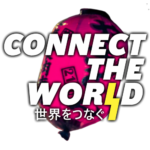
Bastién Teinturier | Connect the World
Bastién really wanted to work on bitcoin and ended up at one of the most important parties within the Lightning Space: ACINQ. He is now VP of Engineering and touches a bit of everything they develop at the French company. Stef and Edward from Connect The World had a very interesting talk with T-Bast about Eclair, Phoenix Wallet and his journey through the Lightning Network. You definitely want to see this one!
Watch or listen to the full interview or start reading below! Enjoy!


Lightning
What was your first experience with the lightning network and do you still know what you did/saw at that moment?
I wanted to find a way to work on bitcoin, at a core level, and was listening to a podcast (I can’t remember which one) about the lightning network (I didn’t know about it at the time). I think the guest was Christian Decker (but I’m not 100% sure, I didn’t know him at the time) and at some point he said that there were three teams collaborating on that project: c-lightning, lnd and eclair. When I heard the name eclair, I said to myself: great, that has to be a french company! I really hoped it wasn’t a canadian one, so I stopped the podcast and went to look online, found their website, saw that they were hiring and contacted them. A couple weeks later, I was hired 🙂
How important is the Lightning Network for the existence of Bitcoin in the future?
To be completely honest, I don’t know if lightning is absolutely necessary for Bitcoin to succeed. Bitcoin can be digital gold, digital cash, or both. If Bitcoin makes sense as digital cash, then lightning is really important. But maybe there won’t be real demand for using Bitcoin as cash (e.g. because of pricing issues)? We at Acinq definitely think there will be (otherwise we wouldn’t be working on it), but we could be wrong, we must be careful not to get lost in the echo chamber.
You’re at the heart of core developments on the Lightning Network and really directly contributing to the adoption of it. What are in your opinion the most important hurdles to take in the long term developments of The Lightning Network when thinking of Lightning as an world wide infrastructure for mass adoption?
The hardest problem for mass adoption is non-custodial onboarding at scale. I don’t think everyone can own a utxo and thus a lightning channel with world-wide adoption. Complementary technology will need to be developed to help lightning scale, such as channel factories, payment pools, fedimint or sidechains.
Which use cases, that are made possible by the Lightning Network, are the most notable in your opinion?
We tend to forget that its primary use case, paying someone (potentially anyywhere in the world) without a trusted intermediary is an incredible achievement! That alone already has the potential to change the world in my opinion. A few concrete use cases also come to mind that are painful today with credit cards: paywalls (I don’t want to give you my credit card number or take a subscription to read an article online that should cost 10 cents), donations (similar issues to paywalls), refunds (I overpayed at the grocery store because the merchant made a mistake in the amount, how does he pay me back if he doesn’t have cash?).
Is it possible to pay for your daily needs in your neighborhood with Lightning?
No, but I’m trying to educate merchants! I’ve had great success with some of the wine merchants, they were really interested in learning more about Bitcoin.
Do you think it’s important to both hodl and use Bitcoin through Lightning as a medium of exchange?
As a truly global currency, I think Bitcoin has very different use cases for different people. Some people are only interested in hodling, others in trading, others in having a decentralized, somewhat anonymous medium of exchange. People should do what makes sense to them, there is no rule that they have to use one way or another.
With more adoption of Lightning it seems that more non-custodial services will be inevitable. Do you see this as a risk/trade-off?
Yes, this is a big trade-off. Most users today are somewhat technical, so they are ok with the hurdles of using technical non-custodial products. But as we onboard more normies, many things will be easier to do custodially, and non-custodial offerings need to be able to keep up.
if you need to describe the development in the lightning space of the last year in a few words how would you describe it?
A lot of experimentation happened, more and more people building on top of lightning. We’re at the beginning of an era of exciting innovation, where we’ll see new use cases emerge.
What do you expect for the coming year if you look at solutions like the BoltCard, NFC-stickers PoS systems, etc. will it be possible to pay with lightning where you want next year this time?
No, I don’t think it will change that fast. I believe we’ll still see slow growth followed by a period of stability, once we’ve exhausted the pool of technologists/enthousiasts. Then we’ll need more time and societal changes to happen before we see a new era of growth (if it even happens).
For podcasts there is Podcasting 2.0 where a listener can directly pay a creator without an intermediate party. What other possibilities do you see possible for Lightning in the future?
So many things are possible…but I’m mostly excited about all the things we haven’t thought of yet, the things that will surprise us most! That will mean we’ll have unlocked true innovation.
Did you use/test all the different lightning implementations?
Of course! I regularly play around with eclair, c-lightning, lnd and ldk. I try to break things and see what they did differently from us.
Support us in our mission
Do you like this article and our other content? Donate and support us in our mission to create a worldwide distributed Lightning Network by connecting countries around the world and bringing The Lightning News to you first!
Follow The Daily Moon also on Telegram and Twitter!

Acinq | Eclair
ACINQ is a startup, located in Paris, France and building an implementation of Lightning. And you believe with us that Lightning is a major breakthrough that will enable a whole new set of use cases and applications.
How did ACINQ start and what is your exact role at ACINQ?
Acinq started in 2014, when Pierre-Marie and Fabrice realized how important Bitcoin would be. They identified two areas that needed to be improved for Bitcoin to succeed at the time: securing your funds (hardware wallets) and scaling transaction throughput. They started working on the hardware wallet part, and were probably the first team to create a working prototype based on Java smartcards. But then they discovered that in the same co-working space, another team was also working on this: Ledger! They realised that the Ledger team would likely be more successful at building a business around hardware wallet, and the lightning paper was just released, so they switched to lightning!
I joined them in early 2019 to work on the specification and on eclair, and later became VP of Engineering. I touch a bit of everything we do, but most of my work today is around the specification and our lightning implementation, eclair.
What are some of the most important things you or ACINQ are working on right now?
We’ve driven most of the innovation in lightning wallets and LSP features. We’ve pushed changes to the specification and implementations that allowed the 2nd generation of lightning wallets like Phoenix to emerge. We’re continuing to do this by working at all layers of the stack, from the core node software to the end-user’s wallet.
ACINQ developed the Eclair Wallet as an Android Lightning Network wallet. It supports both testnet and mainnet, and offers a lot of features, such as channel backup, debug logging and network stats.
For those who don’t know the Eclair Wallet. Can you explain the history roadmap of Eclair about what the main goal was, when creating it?
A first important thing to clarify, that most people get wrong, is that we’re primarily working on a scalable node implementation, eclair. It powers the biggest node on the network (we have tens of thousands of channels) since 2017 and has run flawlessly since then.
Then at some point we realized that we had to build a mobile wallet, because lightning couldn’t succeed without good non-custodial mobile wallets, and it was a highly technical to build one that would be secure and performant. That is what lead us to create eclair-mobile. We wanted it to be simple to use and to hide lightning’s complexity from users. Unfortunately, we failed: the protocol at the time was lacking too many features for that. So we spent years improving the protocol until we were able to take another attempt at building a great lightning wallet. That’s how Phoenix was born.
In 2019 ACINQ released Phoenix, which is a much simpler yet more powerful LN wallet, with options like unified balance (onchain/offchain), instant on-the-fly channels, trampoline routing, encrypted peer backups. And it’s available also on iOS.
Is Phoenix Wallet the successor of the Eclair Wallet? What are the most important advantages over the earlier Eclair Wallet?
Yes, Phoenix is what we wanted to achieve with Eclair Mobile but couldn’t. The goal for Phoenix was to build the UX of an on-chain bitcoin wallet, with the speed and low cost of lightning.
ACINQ states that the Phoenix Wallet makes payments faster and cheaper. How does ACINQ make this possible?
Mostly thanks to trampoline payments: mobile wallets using trampoline don’t need to download the network graph themselves, which saves a lot of bandwidth and latency. They rely on trampoline nodes to find part of the routes to their recipient, while using another layer of onion encryption to keep payments private and secure.
To fully deliver on the anonymity part, we need other implementations to implement trampoline routing. The spec proposal is ready, and we’re waiting for more reviews and implementation work from the other teams.
When using the Phoenix Wallet for the first it feels like this is exactly what pre-coiners are looking for: it doesn’t ask directly to backup the seed phrase for example. Your wallet works directly. There is even a drain function. Why did ACINQ choose this particular user experience?
I’m very happy that you felt that. As I said earlier, our goal was exactly to create the UX of a good on-chain bitcoin wallet, that’s why we made sure it looked like one.
Can you explain how it works under the hood, when putting the first funds in the wallet?
The first time you receive either a lightning payment or an on-chain payment, our node and your Phoenix wallet exchange messages to negotiate fees to open a lightning channel on-the-fly. This channel then uses 0-conf, which means we don’t wait for the transaction to confirm, so that your funds are instantly available. The trade-off we make here is that until the channel funding transaction confirms, Phoenix is trusting that our node will not cheat and double spend it.
How are you able to keep the fees as low as possible?
We’ve done a lot of work on our path-finding algorithm and have refined it over years based on what we learned with real-world data from our node. We’ve also spent a lot of time working on our fee settings, adapting to variations in the bitcoin mempool, and optimising our on-chain costs to be as efficient as possible. This is an area we’re still actively working on, and there is even more room for improvements which should help drive channel creation fees down.
You work on the Lightning Network’s core specifications and implementation, in collaboration with Blockstream, Lightning Labs and other open-source contributors.
Why is it so important to work together for ACINQ at this core level?
Bitcoin and lightning are complex beasts, where subtle mistakes can lead to devastating security issues. We think that it’s very important to have a very deep understanding of everything that happens under the hood to be able to release secure and performant software to deal with something as critical as people’s money.
What is the biggest difference between ACINQ, LND and C-lightning?
C-lightning is a swiss-army knife: it can do everything well and has a very flexible plugin system.
LND is a developer platform: it makes it very easy for others to build applications on top of lightning, without having to go into the gory details of the lightning protocol.
Eclair is a stable, scalable and performant node for LSPs, merchants and routing nodes: we focus on the core features of lightning for enterprise node operators.
With Elle Mouton from Lightning Labs we discussed in Epsisode 22 all different invoice solutions within Lightning, so LNURL, AMP and Lightning Offers/BOLT12. She said and I quote: “I think it can be good to have different methods that are catered to a specific group of users instead of trying to solve everyone’s problems with only one.”
When thinking of all Lightning implementations I feel that it could be possible that ACINQ, LND, C-lightning and Liquid could keep existing in some form and will be interoperable without users noticing it and giving them freedom of choice.
Do you think this could be possible in the end?
Yes, I strongly think that. It’s already happening: the network today is mixture of nodes running different implementations without users noticing, and wallets are also based on different implementations while being interoperable.
Seeing Lightning as a working capital asset and earning yield could also be very important for increasing adoption. It could also make Lightning beneficial for bigger companies.
Do you think there will be more possibilities for yield generation in the future? Like smart contracts?
I’m not sure what we would mean by smart contracts…but there are good opportunities for yield thanks to incoming features like liquidity ads, splicing and peer swap. As a node operator, using your liquidity efficiently while minimizing your on-chain costs will become ever more important, and we’re building the tools to let you do that.
I’ve read your reaction after Olaoluwa Osuntokun (@roasbeef) published a set of draft BIPs for Taro. You asked some interesting questions. What are your thoughts on Taro? And will there be a role for you or ACINQ in the future?
To be completely honest, that’s not something we’re interested in at the moment. We’re focusing on lightning and ensuring that it works reliably, and there’s already a lot to keep us busy for a while there!
Would you like to see in the future Acinq incorporated in an easy setup solution (allinone) like umbrell, mynode, raspiblitz?
Yes, that could be interesting to see. Even though I have an unpopular opinion regarding raspberry pi based nodes: most of them are very bad routing nodes…and while running a bitcoin node always benefits the network as a whole, running a bad lightning node can actually harm users of the network.
Extra
Developments in the Lightning Network and all tools around it are happening at an incredible speed! What’s the most necessary to develop to get more pre-coiners aboard? And what is being done to make it more user friendly?
We need a broader wallet offering and more tools for merchants. I hope more teams start working on wallets and on merchant solutions, as quality will only come if there is enough healthy competition between many products.
What is the latest thing you are working on, right now?
I am working on dual funding, splicing and liquidity ads, while reviewing the great work being done by Thomas in our team on onion messages and Bolt 12 offers.
We have a lot of great developers in our community. If they want to start developing for Bitcoin/Lightning, where would you suggest they start?
The LN markets team asked me the same question for their newsletter recently: https://lnmarkets.substack.com/p/52-t-bast-500m-peerswap-and-much
We need more developers working on the core protocol and implementations. But it can be really tough as there is a lot to learn before they can make meaningful contributions, which can be frustrating. A good alternative is to start working on lightning projects at higher layers, build up knowledge, and then join us to work on the protocol. We’ll welcome such contributors!
Can you tell us a bit more about your background? For example, what did you do before working at Acinq?
I started my developer career at Microsoft, where I spent a bit more than 5 years working on backend services. I then joined a start-up working on process traceability based on bitcoin timestamping, which made me want to work more closely on bitcoin and eventually lead me to lightning.
What kind of app would you like to see on your mobile in the next 4 years?
I would like to see a more diverse wallet ecosystem. All lightning wallets today are very similar and make the same trade-offs. There are opportunities for different sets of trade-offs, that would work better for different sets of users. We just lack more teams working on those.


LNcapital, node management for professionals | Henrik Skogstrøm







